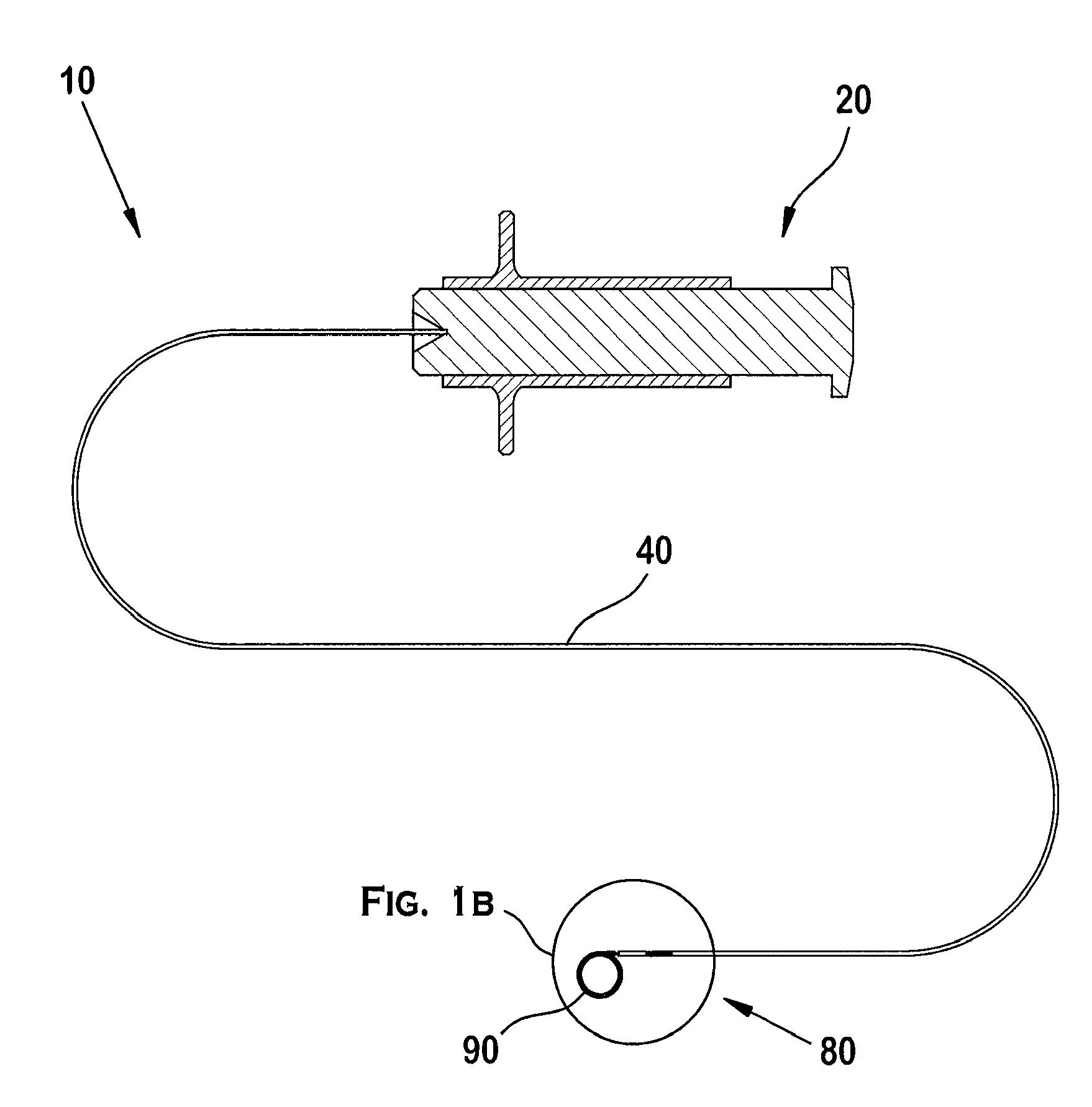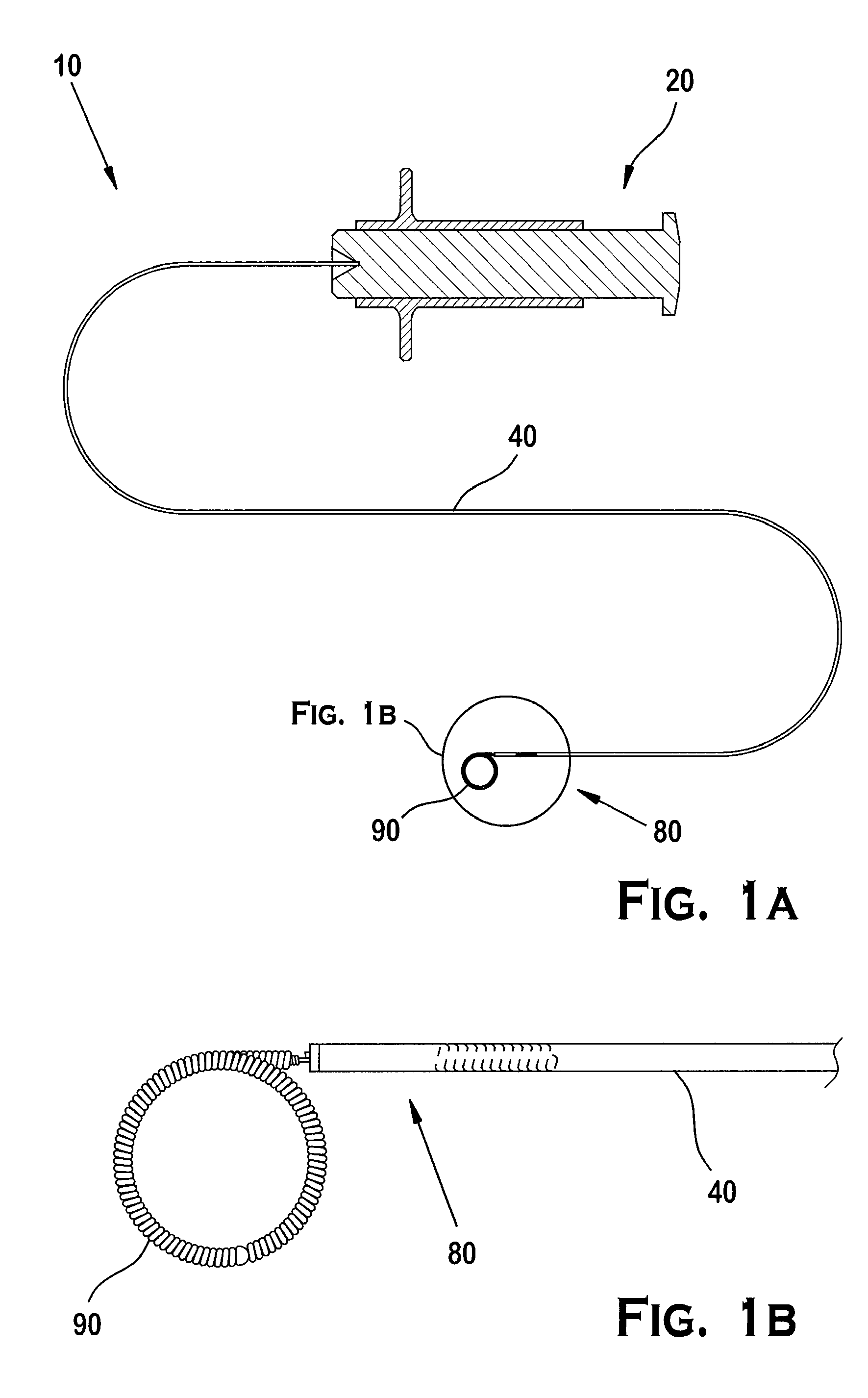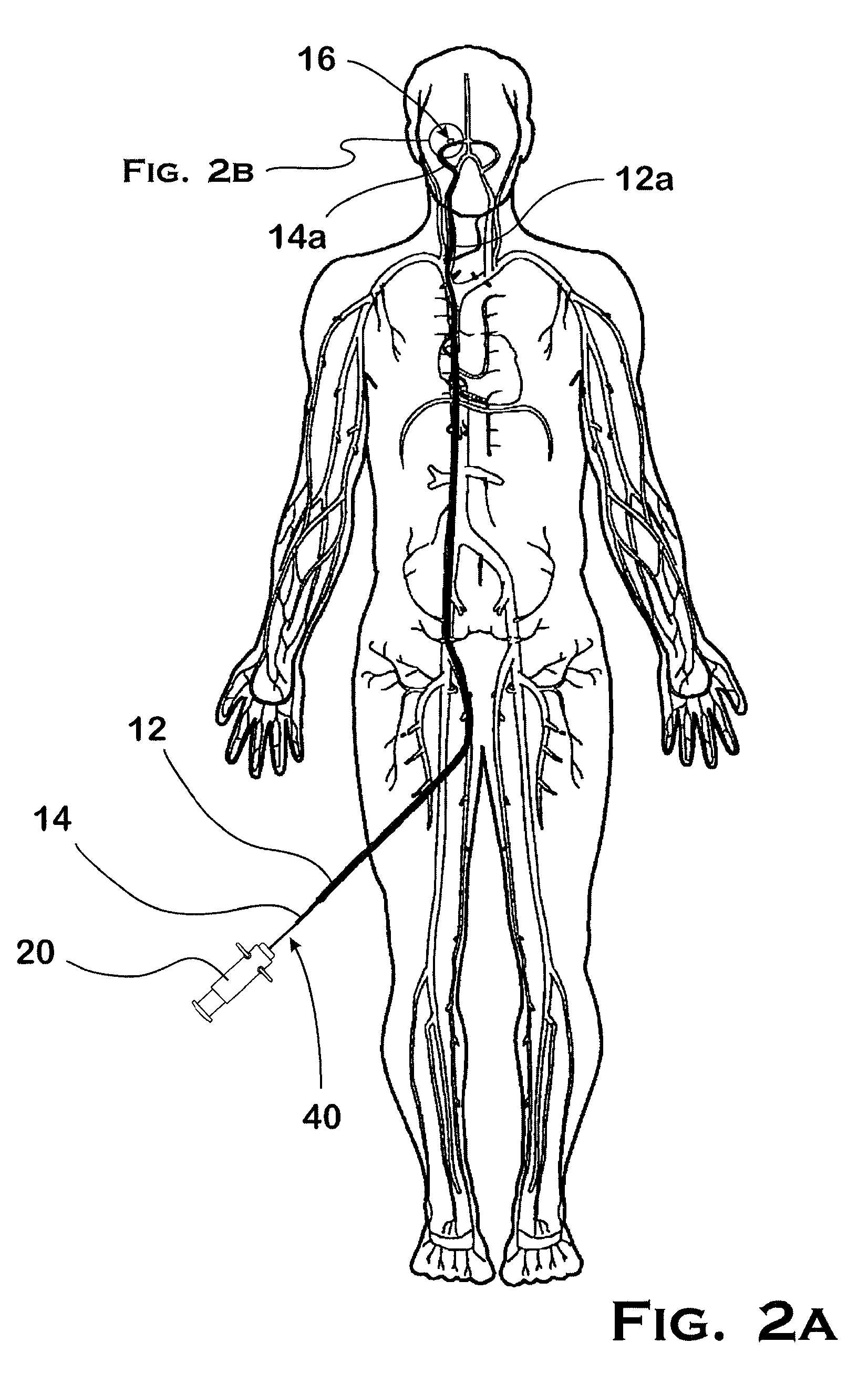System and method for mechanically positioning intravascular implants
a technology of intravascular implants and mechanical positioning, which is applied in the field of therapeutic implant delivery and retrieval systems, can solve the problems of unfavorable operation, undesirable embolization downstream of the target site, and operator inability to operate, so as to avoid or minimize reduce the development of fatigue-related stresses, and facilitate the effect of avoiding fatigue-related stresses
- Summary
- Abstract
- Description
- Claims
- Application Information
AI Technical Summary
Benefits of technology
Problems solved by technology
Method used
Image
Examples
Embodiment Construction
[0074]As illustrated in FIGS. 1A and 1B, the positioning system 10 preferably includes an actuator 20 operated by an operator, a positioner 40 engaging the actuator 20, and an implant interface 80 at the distal end of the positioner 40. A portion of the implant interface 80 engages a complementary portion of an implant 90.
[0075]In the embodiment illustrated in FIGS. 1A and 1B, an operator uses a guide tube or guide catheter 12 to position a delivery tube or microcatheter 14 in a patient's vasculature, as illustrated in FIG. 2A. The procedure involves inserting the guide catheter 12 into the patient's vasculature through an access point such as the groin, and directing the distal end 12a of the guide catheter 12 through the vascular system until it reaches the carotid artery. After removing a guide wire (not shown) from the guide catheter 12, a microcatheter 14 is inserted into the guide catheter 12 and the distal end 14a of the microcatheter 14 subsequently exits the guide catheter ...
PUM
 Login to View More
Login to View More Abstract
Description
Claims
Application Information
 Login to View More
Login to View More - R&D
- Intellectual Property
- Life Sciences
- Materials
- Tech Scout
- Unparalleled Data Quality
- Higher Quality Content
- 60% Fewer Hallucinations
Browse by: Latest US Patents, China's latest patents, Technical Efficacy Thesaurus, Application Domain, Technology Topic, Popular Technical Reports.
© 2025 PatSnap. All rights reserved.Legal|Privacy policy|Modern Slavery Act Transparency Statement|Sitemap|About US| Contact US: help@patsnap.com



